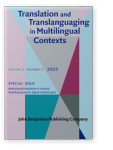In recent years, numerous variations of subtitling approaches, which have been variously defined as enriched,
creative, dynamic, emotive (
Neves 2018), but also ‘creactive’ (
Sala Robert 2016), have been put forward by scholars in the attempt to diversify and expand the
audiences’ access to audiovisual products through subtitles. Also, there has been a significant growth in international film
festivals which, alongside long-established festivals, have contributed to providing audiences with a cultural window on the
world. In Italy, for example, there are hundreds of film festivals, which vary in terms of size, subject-matter, and genre.
Against the backdrop of recent research on audience(s) attending film festivals (
Di Giovanni 2020), accessibility studies (
Greco 2018), and
preferences and familiarity with various types of subtitles for Deaf and Hard-of-Hearing people (
Romero-Fresco 2015), this paper aims to introduce the notion of inclusive subtitling and to propose
guidelines and applications within the context of accessible film festivals and cultural events. The corpus for this empirical
study consists of the short films competing in the eleventh and twelfth editions of the
Sicilia Queer Film Fest,
inclusively subtitled. Results will prove that ‘inclusive subtitles’ have the potential to cater to more varied needs, embracing
settings such as film festivals, theatres, museums, galleries, and similar cultural contexts. In line with
Greco’s (2018) universalist approach, and in contrast with the recent introduction of the term by
Martínez-Lorenzo (2020) applied to minoritised languages, inclusive subtitles is an
expression that refers to intralingual or interlingual subtitles, open or closed (with the aid of external tools, such as an app)
and applied specifically to film festivals.
